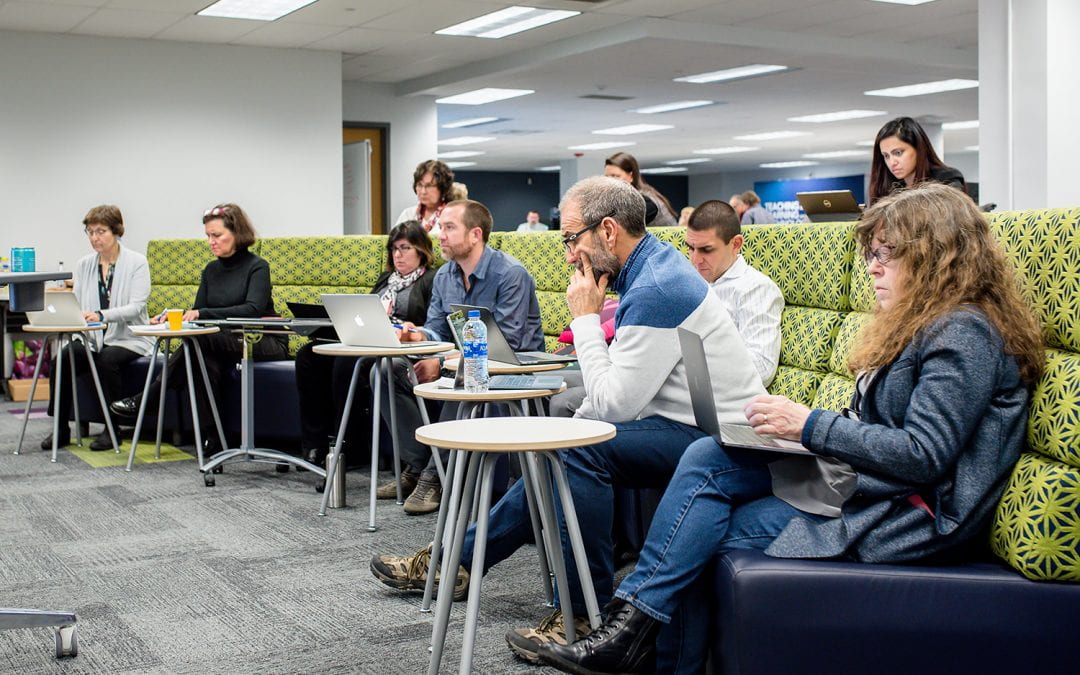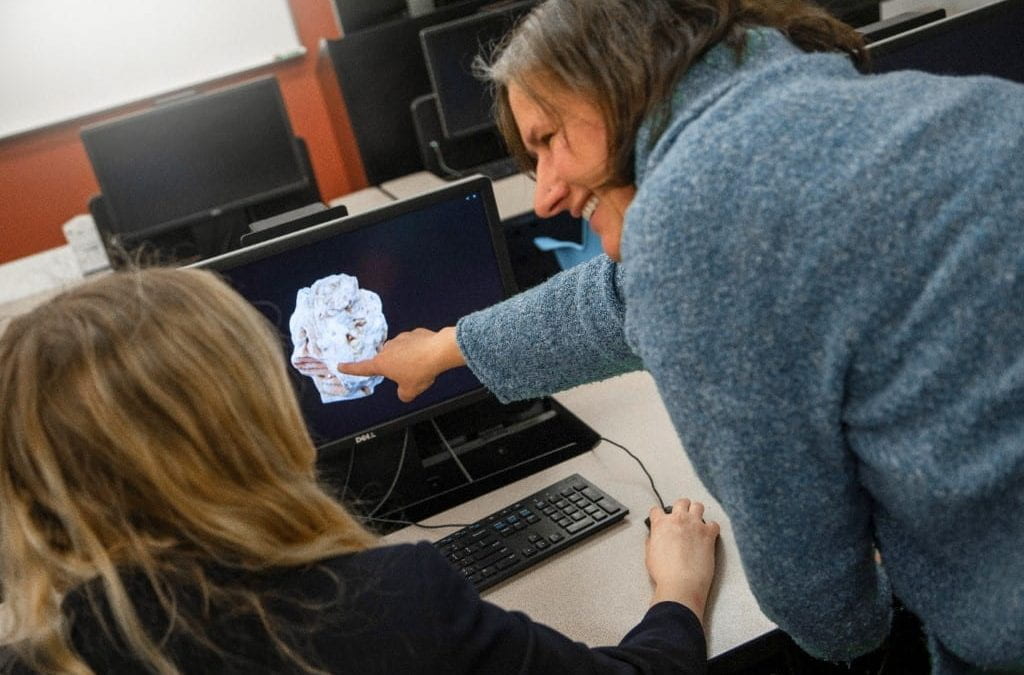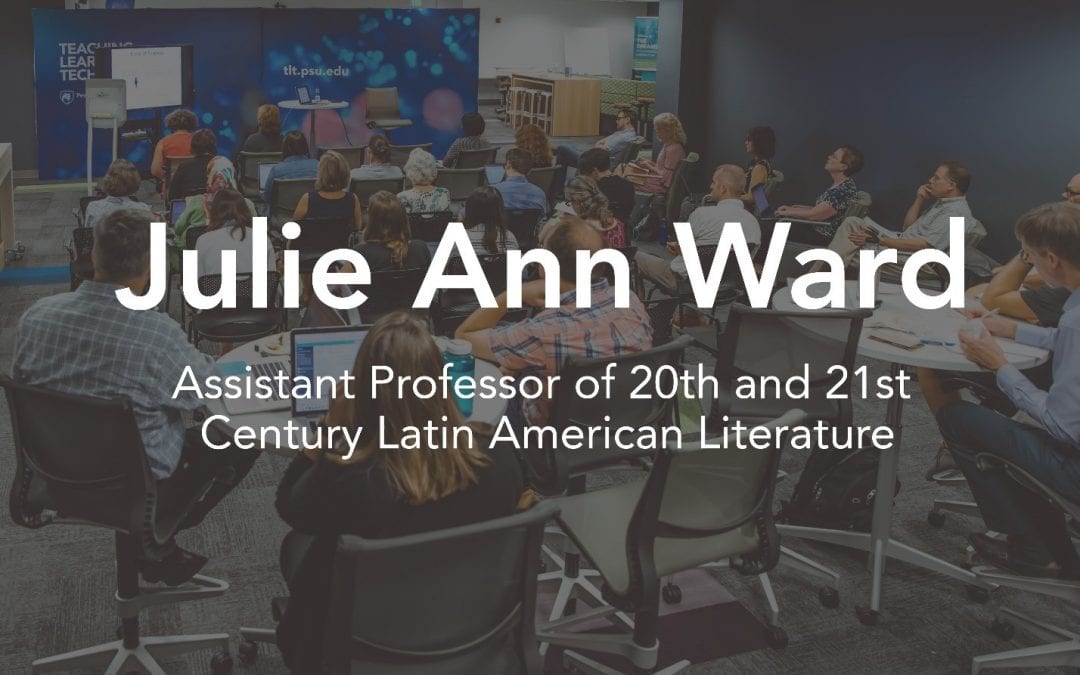
Sep 18, 2019 | Home Page
Penn State faculty who participate in the third round of Affordable Course Transformation at Penn State (ACT@PSU) will continue the effort to provide greater access to higher education through affordable course materials. The call for proposals will open on Wednesday, September 25 and the deadline to submit is Monday, November 11.
“It was exciting to work on [ACT@PSU] because it gave me the resources to complete something I had planned for many years,” said Zachary Klingensmith, assistant teaching professor of economics at Penn State Behrend, when asked about his ACT@PSU project last year. “The ACT team introduced me to existing materials that allowed me to create something beautiful, useful, and free for my [ECON 102 and 104] students which will be used for many, many years to come.”
Published research has shown that open educational resources (OERs) are effective in increasing students’ end-of-course grades along with their potential to save student populations millions of dollars. Penn State is supporting the effort to develop OERs through ACT@PSU, a program funded by the Open and Affordable Educational Resources (OAER) Working Group which is charged by Penn State executive vice president and provost Nick Jones.
Faculty who participate in ACT@PSU receive a grant stipend, instructional design support from Teaching and Learning with Technology, and additional support from the Open Educational Resources coordinator and Open Education Librarian.
ACT@PSU will open the call for proposals on September 25. Interested faculty should visit Penn State’s OER website and click on “Schedule Consultation” in the top right corner and choose to meet in person or via Zoom with Julie Lang or Amanda Larson.
Following the consultation, an online application can be submitted along with a syllabus for the course intended for transformation.

May 1, 2019 | Home Page
Open educational resources (OER) are transforming the landscape of higher education, allowing for more accessible and affordable learning. At Penn State Harrisburg, geology students are using digital rock kits and an open-access textbook in place of traditional rock packages and text, a change that has fueled student engagement.
Through a partnership between Penn State Teaching and Learning with Technology (TLT) and the Penn State University Libraries, the ACT@PSU program revolutionizes faculty use of the traditional textbook. ACT@PSU supports instructors who want to teach courses through OER. With the assistance of Julie Lang, OER coordinator for TLT, and Dan Poeschl, multimedia specialist for The Center for Teaching Excellence at Penn State Harrisburg, the transformation of geology classes at the Harrisburg campus began in fall 2018.
“When the center purchased the Agisoft PhotoScan software, we created 3D rocks to replace the rock kit ultimately,” said Jennifer Sliko, assistant teaching professor of earth and geosciences at the Harrisburg campus. “In the future, we will have the rock kit as a recommended but not required resource.”
Poeschl photographed rocks from the traditional kit then uploaded them into the software to create 3D models accessible through SketchFab, where people can share 3D models just like they would YouTube videos. “The software’s primary function is to scan and create 3D models of real-life objects quickly. Its most popular use is by game designers. They can quickly and efficiently populate an open world video game without painstakingly creating a bunch of custom objects.”
By the project’s end, Poeschl had created 43 models. Some reflective, transparent rocks like quartz didn’t translate well in the 3D space, but there will be alternative ways Sliko can teach with these rocks in a digital realm.
Initially, Sliko sought out an online replacement for the rock kit to solve the issue of academic integrity. Each year, the campus bookstore bought back the kits from students, and students could pass on the identification of each rock to the next class.
With the 3D rocks, Sliko can change the labeling each year. “In 2018, ‘Rock A’ might be granite, but in 2019, ‘Rock A’ will be a completely different rock specimen. It reduces the burden of the textbook purchase and minimizes cheating from semester to semester.”
Affordability also plays a significant role in switching to OER. By fall 2019, Sliko plans to have her course become completely OER-based. Physical rock kits are costly, with not many used options available. Students in Sliko’s course now have an online textbook they use to reference for rock identification.
Student engagement has significantly increased over previous semesters. Students are researching online and engaging more with their classmates to identify the rocks.
In the 3D space, students can zoom in and out on the rocks and easily manipulate and identify them based on color and individual mineral grains. The effect is the same as though the students were looking at the stones through a hand lens. Plans for improvement include digital representations of other methods to test rocks and minerals, such as reactions to acids and magnets.
The advantages of using digital rock kits and an open-access textbook will extend far beyond the Harrisburg campus. Other instructors can use these models for their online classes as well.
Sliko said, “Having that innovative technology as we move forward becomes more crucial because the students expect it. In online classes, it’s a nice way to enwrap their attention.”

Apr 2, 2019 | Uncategorized
Over the past several years, there has been an increase in students requesting and using open educational resources (OER) to replace high-cost traditional course materials. A new trend is emerging where students are not only consuming OER, but also creating it. At Penn State, Teaching and Learning with Technology (TLT) offers resources to expand the OER initiative.
On Monday, April 8, from 11 a.m. to noon in The Dreamery, TLT will be hosting Julie Ann Ward, assistant professor of 20th and 21st Century Latin American Literature at the University of Oklahoma (OU). Ward will discuss her experience editing a student-created open educational resource, Antología abierta de literatura hispana. There will be a Q & A period, and the discussion will be available to access remotely via Zoom.
In fall 2016, with the help of the OU Libraries’ Alternative Textbook Grant, groups of four to five students in Ward’s Introduction to Hispanic Literature and Culture course selected ten texts from the fifteenth to the twentieth century to include in a critical edition. Ward wrote about the project in A Guide to Making Open Textbooks With Students, a recipient of the Open Education Consortium’s 2018 Open Education Award for Excellence. The book serves as a handbook for faculty interested in involving students in the creation of open textbooks.
To learn more about open educational resources, visit the Open Educational Library and the Open Pedagogy Notebook. If you are interested in learning more about how to get your students involved in the creation of OER, contact L-OER-AT-PENN-STATE@lists.psu.edu.


